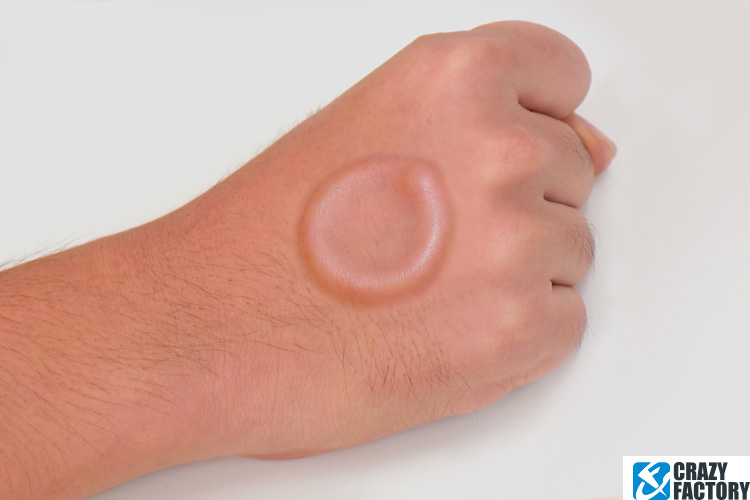Implantation/en: Unterschied zwischen den Versionen
(Die Seite wurde neu angelegt: „frame|alt=Implantation <h4>Implants</h4>“) |
(Die Seite wurde neu angelegt: „<i>Body modification</i><br> <br>The US body artist Steve Haworth is credited with rediscovering irezumi, the tattoos traditionally worn by Japanese yakuza, and implants. This latter form of body modification involves inserting a metal or Teflon object such as a ball or ring under the skin using local anaesthetic. The shape of…“) |
||
| Zeile 3: | Zeile 3: | ||
<h4>Implants</h4> | <h4>Implants</h4> | ||
<i>[[Special:MyLanguage/BodyModification (kurz BodyMod oder BodMod)|Body modification]]</i><br> | |||
<i>[[Special:MyLanguage/BodyModification (kurz BodyMod oder BodMod)| | |||
<br> | <br>The US body artist Steve Haworth is credited with rediscovering irezumi, the tattoos traditionally worn by Japanese yakuza, and implants. This latter form of body modification involves inserting a metal or Teflon object such as a ball or ring under the [[Special:MyLanguage/Haut|skin]] using local [[Special:MyLanguage/Betäubung|anaesthetic]]. The shape of the object becomes fully visible after a couple of weeks. | ||
<br><b> | <br> | ||
<br><b> | <br><b>Healing:</b> With proper [[Special:MyLanguage/Pflege|aftercare]], the wound will heal in four to six weeks. | ||
<br><b>Risks:</b> It’s vital that the implant be correctly positioned, as otherwise it can press on important nerves and even cause paralysis. The jewellery must be made of [[Special:MyLanguage/Implantatstahl|surgical steel]] or Teflon, which are hypoallergenic, unlike other materials such as [[Special:MyLanguage/Nickel|nickel]] and lead. | |||
<br><br> | |||
However, even these can sometimes cause allergic reactions, for example if the jewellery has not been made with sufficient care. A good mod artist and high-quality [[Special:MyLanguage/Schmuck|jewellery]] are therefore a must for this type of body art. | |||
Aktuelle Version vom 24. September 2021, 13:00 Uhr
Implants
The US body artist Steve Haworth is credited with rediscovering irezumi, the tattoos traditionally worn by Japanese yakuza, and implants. This latter form of body modification involves inserting a metal or Teflon object such as a ball or ring under the skin using local anaesthetic. The shape of the object becomes fully visible after a couple of weeks.
Healing: With proper aftercare, the wound will heal in four to six weeks.
Risks: It’s vital that the implant be correctly positioned, as otherwise it can press on important nerves and even cause paralysis. The jewellery must be made of surgical steel or Teflon, which are hypoallergenic, unlike other materials such as nickel and lead.
However, even these can sometimes cause allergic reactions, for example if the jewellery has not been made with sufficient care. A good mod artist and high-quality jewellery are therefore a must for this type of body art.
